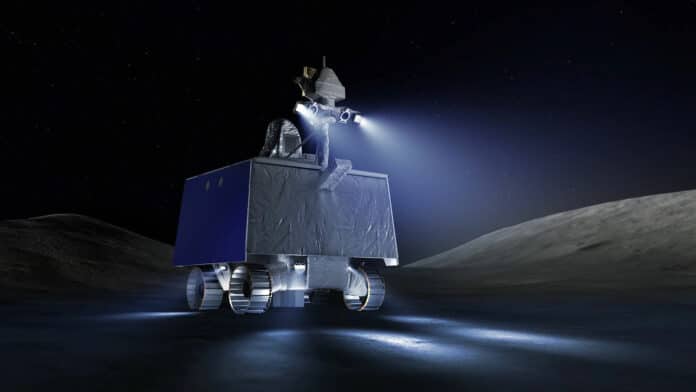Sending a rover into space, landing it on a celestial body, and guiding it to explore scientific locations on a completely foreign surface is a complex and challenging task. However, the advent of artificial intelligence in the 21st century can offer some benefits and help space missions deal with some of the uncertainties that come with planning and executing a real-time mission in a challenging, largely unexplored environment.
NASA is currently preparing for its first-ever rover mission, the Volatiles Investigating Polar Exploration Rover (VIPER), which will land on the Moon’s south pole. Its mission will be to better understand the environment where NASA plans to send astronauts as part of the increasingly complex Artemis missions.
VIPER’s mission to the Moon will be guided by a team of humans and several AI-powered tools. The team has developed and used artificial intelligence algorithms to help assess risk and make optimized decisions, from selecting a landing site to planning out the rover’s path.
These tools are not meant to replace human input. NASA scientists design these systems in the first place, input the relevant data, and then use the AI’s outputs as a starting point for making mission-related decisions. For the VIPER mission, the team plans to use an interactive AI system called SHERPA (System Health Enabled Real-time Planning Advisor) to help map out different routes for the operations team to choose from.
“AI allows VIPER to be more adaptable, flexible, resilient, and efficient,” said Edward Balaban, VIPER’s lead for strategic planning at NASA’s Ames Research Center in California’s Silicon Valley. “It’s a tool that allows us to use change as a strength.”
The VIPER mission will run for about 100 days after landing on the lunar mountain Mons Mouton near the lunar South Pole. The 992-pound (450-kilogram) rover is expected to land on this difficult terrain by the end of 2024.
VIPER will make many stops at several science stations throughout its journey, which were selected for their potential to achieve the mission’s science objectives. These objectives include understanding the distribution of water on the surface of the Moon, the delivery history of water to the Moon, the origin of lunar water and other volatiles, and how volatiles evolve over time after they are deposited on the surface.
With the ability to process multiple factors and run thousands of mission simulations, SHERPA can present the team with several options while planning the rover’s traverse before mission operations. SHERPA can even provide contingency branches for where to go if something changes or doesn’t go according to plan.
What’s even more remarkable is that SHERPA’s work doesn’t end after launch. It can be used for real-time, dynamic problem solving, giving the VIPER team potential solutions to adjust the rover’s traverse when presented with new scientific or operational information.
It’s interesting to note that a traverse from SHERPA isn’t just a one-and-done plan. The AI provides a template that humans consider and revise, and any changes made are run back through SHERPA to determine feasibility or any issues. This allows team members to make adjustments based on factors that the AI may not be able to consider, such as constraints related to staffing for the team members driving the rover or operating the rover science instruments.
The information gathered from these sites will give NASA scientists a wide range of scientific data on the surface characteristics, chemistry, and accessible resources of the Moon. This data will provide insights into water ice hotspots and factors that drive water distribution on the Moon’s surface and help explore technological strategies for harnessing lunar resources in future human space exploration initiatives. Additionally, the data will contribute to a deeper understanding of the Moon’s south pole, which is a prime target for future exploration by astronauts and robotic missions.
